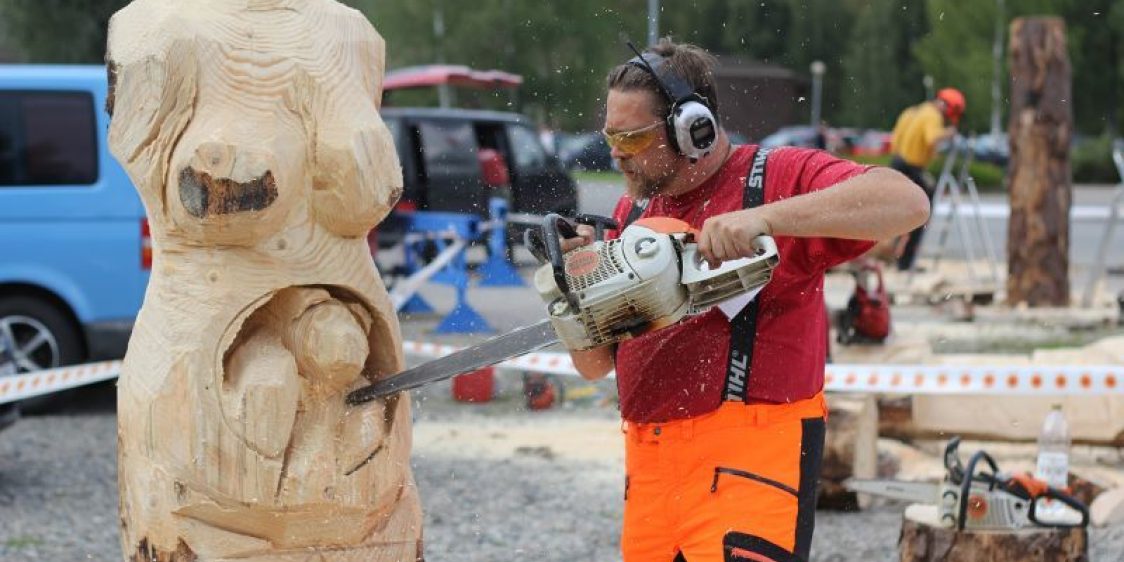
22 new elements to the National Inventory of Living Heritage
The Ministry of Culture has nominated 22 new elements to the National Inventory of Living Heritage which now has 86 elements altogether.
There are now a total of 86 elements on the national inventory that is being compiled in relation to the UNESCO Convention on the Safeguarding of the Intangible Cultural Heritage. The Finnish Heritage Agency is responsible for implementing the Convention in Finland.
A wide variety of handicraft skills were added to the list, such as weaving of Kainuu’s peilikäs and Rauma lace making as local handicraft skills. In addition, new elements to the list include knitting, goldsmithing, dyeing with natural dyes, chainsaw carving, repairing wooden boats, shingle basket making, and construction of a traditional pole fence.
In the area of music and dance, the playing of the South Ostrobothnia two-row accordion playing, the folk partner dance and dance music, and the pelimanni-style harmonica playing were added to the national inventory. From the area of food traditions, Lemi's särä tradition was named to the list.
As far as games are concerned, the list now includes the miniature game or figurine hobby culture and the relay race carnival of Finnish-Swedish schools, Stafettkarnevalen. Intangible cultural heritage related to nature and the universe is represented by the Orthodox procession of the cross, Finnish cattle and the tradition of cattle farming, rafting tradition and blood cupping. In addition, the voluntary work practice “talkoot” was named.
For the first time, traditions with roots in immigrant cultures were included, when the celebration of the Mexican Day of the Dead and Chile's Independence Day, el Dieciocho, were named. Under the UNESCO Convention, it is important to include the notion of cultural diversity and the renewal of traditions.
"New additions include again traditions of the entire country, such as talkoo and knitting. On the other hand, for example, the miniature or figure hobby culture was a new familiarity even for the evaluators. It's great that we could also raise the perspective of sustainable development by adding the repairing of wooden boats to the inventory. I am particularly happy that the perspective of cultural diversity is strengthened in the inventory through the Finnish Mexican and Chilean traditions", says Senior adviser Leena Marsio from the Finnish Heritage Agency.
The call organized for the third time collected 41 applications from different parts of Finland. The first application round was organized in 2017 and the second in 2020.
The national inventory includes a wide variety of intangible cultural heritage
The Finnish Heritage Agency is responsible for the implementation of the UNESCO Convention on the Safeguarding of the Intangible Cultural Heritage in Finland. The Convention also includes the inventorying of intangible cultural heritage at the national and international levels. It is a tool that can be used to identify, describe and convey information about living traditions.
European countries have different practices in preparing national inventories, and Finland has received special praise for its inclusive approach. All submissions to the national inventories come from the communities practicing the tradition themselves, and applications are peer-reviewed.
The elements selected for the national inventory must first be included in the Wiki-inventory of Living Heritage, where different communities can add articles about the cultural heritage that is important to them. This approach ensures that even those traditions that do not make it to the national inventory get the visibility they deserve.
The Wiki-inventory of Living Heritage is a versatile information bank on intangible heritage. The platform has currently 240 articles from more than 400 communities and organisation in six different languages. The wiki has also attracted interest worldwide, as the site is visited annually by approximately 100,000 visitors from more than 150 countries.
Elements nominated for UNESCO's international lists of intangible cultural heritage need to be on the National inventory. Sauna tradition in Finland, Kaustinen fiddle playing and the Nordic Clinkerboat traditions have been inscribed to the UNESCO Representative list. Finland is also involved in a multinational application, where the knowledge, knowhow and skills on handmade glass are being propose to the list. A decision on the application is expected from UNESCO in December 2023.
Theme year of living heritage 2023
The new elements on the national inventory were announced on 9th October 2023 at the main celebration of the theme year of living heritage at the central library in Oodi, Helsinki. The celebration presents living heritage through performances, discussions and work demonstrations.
In 2023, the theme year of living heritage has been celebrated all over the world. It’s the 20th anniversary of the UNESCO Convention and Finland has been a member of it for 10 years. In addition, the theme of the European Cultural Heritage Days has been living heritage, and more than 300 related events have been organized in different parts of Finland.
More information:
Leena Marsio, Senior advisor, Finnish Heritage Agency leena.marsio(a)museovirasto.fi +358 29533 6017
Justifications for the selection on each element (in Finnish)
All elements on the National Inventory of Living Heritage
All articles in English in the Wiki-inventory
New elements in the National Inventory in 2023
Celebrating Chile's Independence Day, el Dieciocho, in Finland
Celebrating the Mexican Day of the Dead in Finland
Construction of a traditional roundpole fence
Finnish cattle and the tradition of cattle farming
Folk partner dance and dance music
Miniature gaming or figurine hobby culture
Orthodox procession of the cross
Pelimanni-style harmonica playing
South Ostrobothnia two-row accordion playing